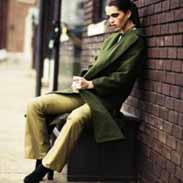The Occupational Therapy Practice Framework: Domain & Process, 3rd edition – Flashcards
Unlock all answers in this set
Unlock answersquestion
Taxonomy
answer
a clearly defined classification of concepts into an ordered hierarchy e.g. taxonomic code of occupational performance voluntary movement or mental processes -> action -> task -> activity -> occupation
question
Who is the client?
answer
Person, group, population
question
Service delivery
answer
-Direct services: through collaboration with client -Indirect services: through advocacy or consultative work
question
Domain vs process
answer
Both pieces of the framework Domain: outlines the professional purview (scope of practice) and the areas in which its members have established a body of knowledge and expertise Process: the actions practitioners take when providing services that are client centered and focused on engagement in occupations
question
The framework domain 5 factors
answer
1.Occupations 2.Client factors 3.Performance skills 4.Performance patterns 5.Context and environments
question
The frameworks occupation
answer
The daily activities in which people engage -Meaningful, unique to each client, temporality, objective and subjective, purposeful -Used as a means and end
question
Types of occupation (8)
answer
1. Activities of daily living (ADLs) -Swallowing/eating, bathing, sexual activity 2. Instrumental activities of daily living (IADLs) -Finances, community, mobility, caregiving 3. Rest and sleep -Bedtime routines, relaxation 4. Education -Academic coursework, researching at topic of interest 5.Work 6. Play -tag 7.Leisure -painting class, long distance running 8. Social participation
question
Client factors (3)
answer
1. Values: principles, standards or qualities considered worthwhile to the client that holds them -caring for a loved one 2.Beliefs: cognitive content the client believes to be true -success is achieved through hard work, everything happens for a reason 3. Spirituality: how people find meaning in life -religion, being near nature
question
Body functions
answer
Physiological and psychological functions of body systems ex. emotional regulation, maintaining heart rate
question
Body structures
answer
Anatomical parts of the bodyE.g. amygdala, heart, blood vessels
question
Performance skills (3)
answer
Observable actions used when carrying out an occupational; goal directed -Context dependent and learned/refined over time -Brought about by various body functions and structures -Occur in relation to or along with other performance skills Motor skills: physical interactions. required motor and sensory input ex. grip, walk, reach Process skills: cognitive executive functions ex sequencing, choose, organize Social interaction: social ex. match language, empathize, take turns
question
Performance patterns (4)
answer
Habits -automatic, rooted in familiarity Routines -repeated patterns of behaviour that provide structure in life ex. good to look at nighttime routines Rituals -imbued with shared meaning (personal, social, cultural), symbolism, connected to values, beliefs ex. birthday cake and song, prayers before meal Roles
question
Context - (5)
answer
Less observable; may be subjective - external to and within the clients Cultural- impact on identity, roles, choice of activity and expectations/preferences Personal- demographics Temporal - all temporal considerations ex. life stage, hisotry Virtual - where interactions occur without physical context ex. email, phone, snapchat
question
Environment (2)
answer
Social & physical
question
Occupational justice
answer
Occupational rights to inclusive participation in everyday occupations for all persons *Note that it is interwoven throughout context and environmentLink to role for OT in empowerment and advocacy
question
Process highlights (4)
answer
1. Model of service delivery 2. Clinical reasoning 3. Therapeutic use of self 4. activity analysis
question
Process stages (3)
answer
1.Evaluation What does the client want/need to do?•Occupational profile •Goals related to occupational participation •Prioritize/identify targeted outcomes •Analysis of occupational performance 2.Intervention •Plan, implement and review 3. Targeted Outcomes •End result of occupational therapy, as related to occupational participation goals. •Monitored throughout process •Highlights use of valid outcome measures
question
Of the models you know, which ones do you see represented in the Framework?
answer
ICF: How they site body structure and function and how they define well being MOHO: -with the inclusion of habits, roles, performance patterns -client factors in terms of values CPPF: On the outside it includes process to practice CMOP-E: in which the person, environment and occupational are structured -blend of the two for the environment in which explicitly states context and environment but does separate it
question
How might your use of a conceptual model like CMOP-E or a practice process model like CPPF differ from your use of the Framework?
answer
Mishmash of conceptual and practice together
question
Strengths of the framework
answer
-All encompassing -Great motivational poster -Good for informing clients and other professionals on scope of practice -explicitly mentioned the demographic factors and how that effects practice -reference to the virtual context that is important and the importance will most likely increase as time goes on
question
Improvements for the framework
answer
-Not clear clients centered, also not including therapist interaction -Don't like the outside arrows, find them unhelpful and don't like that there is no way out of the model -Not necessary to write context and environment 4 times -Only clear female and male in the center -Having the context and environment outside it seems to not include the effect of the person on the environment as much --> like the Kawa



